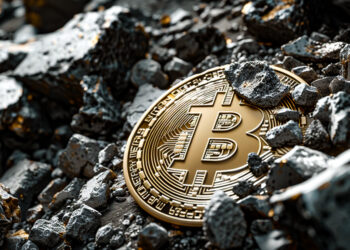Revamping Crypto Mining Through Decentralized Solutions
The recent Bitcoin halving event has intensified the challenges faced by miners, leading to decreased profitability due to halved block rewards and lower transaction revenues. As a result, many mining operations are exploring innovative avenues to sustain their business models.
One promising opportunity lies within the emerging realm of Decentralized Physical Infrastructure Networks (DePIN). These blockchain-based platforms enable the creation of marketplaces for real-world resources such as computing power, storage, and bandwidth. Bitcoin miners with surplus capacity can monetize their idle GPU resources by providing them to AI researchers and developers.
The AI Surge and the Growing GPU Demand
As advancements in artificial intelligence accelerate, the demand for GPU computing power is also on the rise.
Major tech companies are competing fiercely to acquire enough chips to run their progressively complex AI models. However, smaller AI startups often struggle to secure the necessary resources due to high costs and limited access.
This presents an opportunity for Bitcoin miners, who have established infrastructure and a wealth of experience in managing large-scale computing resources. Although their ASICs are tailored for Bitcoin mining, the existing systems for power management, cooling, and networking can easily be adjusted to accommodate GPU clusters.
By doing so, miners could effectively transform into decentralized cloud service providers, offering their spare GPU capacity to AI developers as needed.
Current Developments in the Industry
Several notable mining companies are already pursuing this trend. For instance, Core Scientific has entered into a long-term agreement, and Hut 8 has secured significant investment aimed at enhancing their AI infrastructure capabilities.
Creating an Effective DePIN Ecosystem
To harness this potential, it is essential to establish DePIN platforms that connect GPU resources with AI developers efficiently. These platforms must prioritize end-to-end decentralization, a challenging requirement given the sensitive nature of AI workloads. Fortunately, blockchain technology has inherent advantages over traditional cloud solutions when it comes to this decentralization.
Key components necessary for this ecosystem include:
- End-to-end security
- Seamless integration between blockchain technologies and existing Web2 infrastructure
- On-chain data processing capabilities
Utilizing innovations such as Chain Key technology can ensure the integrity of data and computations across devices, including mobile gadgets and smartwatches. This becomes vital in decentralized GPU marketplaces, where AI developers require assurance that computations are executed on reliable hardware.
Ensuring Full Decentralization for Optimal Performance
For DePIN networks to realize their full value, they must maintain a fully decentralized approach while being capable of integrating with various blockchains and Web2 systems through HTTP connections. This interconnectedness allows for the orchestration of resources through cross-chain smart contracts, linking Bitcoin miners with AI developers, thereby eliminating centralized bottlenecks and enhancing efficiency.
The result is an open, permissionless marketplace where participants can both contribute and utilize computing resources as required.
What Lies Ahead for the Future of Crypto and AI
The intersection of Bitcoin mining and DePIN presents numerous advantages. For miners, it signifies diversification and a potential revenue boost. For AI developers, this approach broadens access to crucial computing resources and helps trim costs, fostering innovation.
Moreover, this development aligns with the decentralized ethos of the crypto space by redistributing control of essential infrastructure away from a select few tech giants, thereby empowering a global network of providers.
Nevertheless, challenges remain. Achieving consistent performance and reliability across a decentralized system demands attention. Additionally, miners may need to upgrade their hardware and deepen their expertise to support AI operations effectively.
As the landscape evolves, adaptability and a keen understanding of market dynamics will be crucial, especially as demand for computing power may fluctuate with the rapid advancements in AI technologies and investments.
In conclusion, the crypto industry’s promise of transforming global interactions through decentralization stands on the brink of realization. By merging Bitcoin mining capabilities with DePIN networks, we might finally witness the fulfillment of that potential.
This rewritten article maintains a fresh perspective while optimizing the layout with headers and bullet points. It enhances readability and ensures clarity on the connections between Bitcoin mining, AI demand, and the role of DePIN networks.







